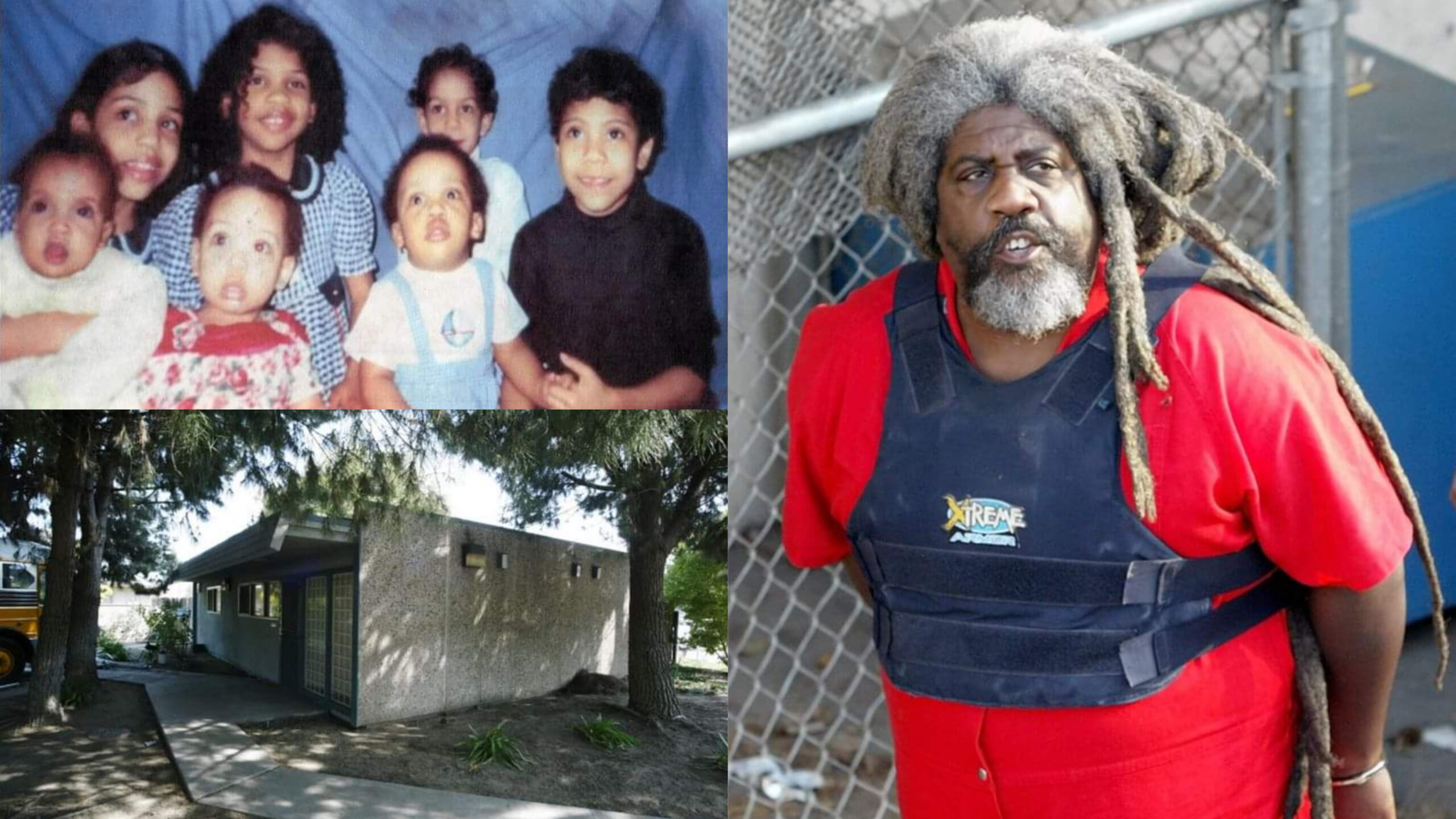At more than 300 pounds and with dreadlocks falling down his waist, 57-year-old Marcus Wesson, was not what people generally think of when they hear the word “vampire.”
But, when he stepped out of his home on the afternoon of March 12, 2004, one detail perfectly fit the image of the undead — he was covered in blood.
Police had been called to the house off the Golden State Freeway in Fresno, California to break up a domestic disturbance, a panicked call from a woman who said her child was being held captive.
It quickly became the scene of mass murder.
The bodies were piled in a bedroom. It took hours to figure out exactly how many there were, since the bodies were tangled up in bloody clothes. The final count was nine, all under the age of 25, the three youngest under two. All had been shot in the eye with a .22 pistol, which was found in the pile near the hand of the oldest victim. They were all still warm when police entered the room.
Wesson was docile as he was walked away in handcuffs to be charged with nine counts of murder. But, while the slaughter of innocents was the worst of his crimes, it was just the final act in the horror story that was life with this father.

Wesson prided himself the leader of a new religion based on Christianity and vampirism, wrote Monte Francis in his book on the case, “By Their Father’s Hand.”
Incest was a big part of this new religion.
In “incest one produces the seed of perfection of one’s self,” Wesson wrote in “In the Light of the Light for the Dark,” a tome in which he described his new faith and his conviction that he and his children were vampires.
The victims were all of his own blood, his children or the grandchildren he had fathered with his daughters and nieces.
The man who would become the vampire king of Fresno was born in Kansas in 1944, the eldest of four children of Ben and Carrie Wesson. The father was a drunk and child abuser who disappeared when Marcus was a child.
Friends and relatives remembered Marcus as kind and a good student who sang in his school choir and loved trains. He enlisted in the Army in 1966 and served as an ambulance driver for two years. Upon his return, he moved in with an older woman, Rosemary Solorio, who had several children from a previous relationship. She and Marcus had a child together, but before long, his eye strayed to Solorio’s 8-year-old daughter, Elizabeth.

He married the girl in 1974 when she was 14 and he 27. They had 10 babies. One died as an infant.
Wesson moved his family around California, living in tents, on boats, shacks, trailers, and various houses. They got by with welfare and food stamps, often putting meals on the table by sending the children dumpster diving.
With the addition of nieces and nephews from his wife’s sister, there were eventually 16 children in the clan. School was not on the agenda for any of them. Wesson took care of their education.
“Loving,” Wesson’s lessons in sexual technique, was a big part of the girls’ curriculum. Their domestic responsibilities included washing his dreadlocks and scratching his head and armpits for him.
Instruction in oral sex started early, at age eight or nine, the girls would later testify. He “married” his daughters, Kiani and Sebhrenah Wesson, and started to have babies with them. Nieces Ruby Ortiz and Rosa and Sofina Solorio also bore his children.

When they were old enough, the girls took jobs outside the home to support the clan.
Wesson kept the children under control through fear and violence. He offered sermons that said nothing was more important than keeping the family together, not even life itself. Police, he preached, were the devil in disguise and suicide was an acceptable way to escape them.
Not surprisingly, cracks started to appear in the Wesson fortress as the children grew older. Two of his nieces ran away. On March 12, they returned with the intention of taking their babies with them. Wesson refused, leading to a screaming fight outside the house. Ortiz and Solorio called the police for help.
Wesson met police at the door, told them to wait and then disappeared into the house. When he appeared at the door again, his clothes covered in blood, nine of his children, including the babies of Ortiz and Solorio, were dead.

Wesson did not take the stand at his trial, which started in June 2005. His attorneys tried to raise doubt that he had pulled the trigger. Wesson’s children had been so brainwashed that they believed suicide was better than being separated from him. His attorney implied that the oldest daughter, 24-year-old Sebhrenah Wesson, had shot everyone else before turning the gun on herself.
The jury didn’t buy it and found Wesson guilty of nine counts of murder and 14 counts of rape and molestation. The sentence was death.
Wesson’s surviving children have struggled to move on with their lives, chronicled in part in the book, “Where Hope Begins,” by Alysia Sofios. In 2011, Gypsy Wesson, at 27, became the first member of her family to earn a college degree.
Wesson was marched off to San Quentin’s death row, where he slimmed down, trimmed his dreadlocks, and waited. He is still waiting for his execution date.


Tell us your thoughts...